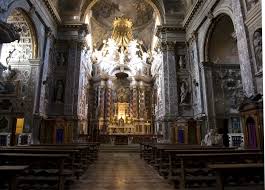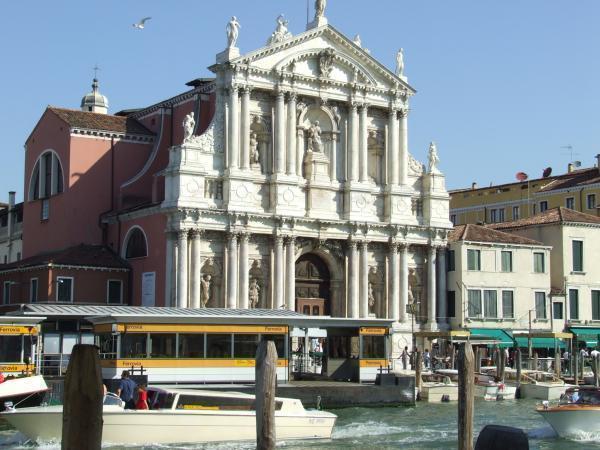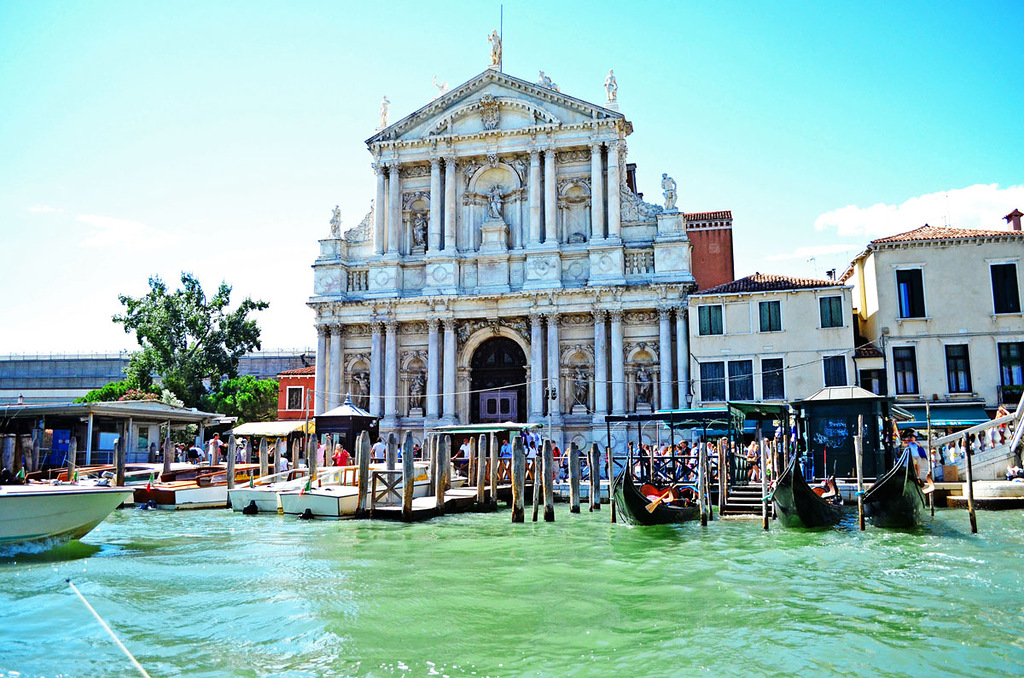Santa Maria di Nazareth is a Roman Catholic Carmelite church in Venice, northern Italy. It is also called Church of the Scalzi (Chiesa degli Scalzi) being the seat in the city of the Discalced Carmelites religious order (Scalzi in Italian means "barefoot"). Located in the sestiere of Cannaregio, near Venezia Santa Lucia railway station, it was built in the mid 17th century to the designs of Baldassarre Longhena and completed in the last decades of that century.
The Rococo facade, financed by the aristocrat Gerolamo Cavazza, was erected by Giuseppe Sardi, from 1672 to 1680. The four statues in the first order, the statue of the Virgin and Child, and the statues of Saint Catherine of Siena and St Thomas Aquinas are sculpted by Bernardo Falconi.
The first chapel to the right has a statue of St John of the Cross, attributed to Falconi. The statues of Faith, Hope, and Charity are by Tommaso Rues. The third chapel on the left has a statue of St Sebastian (1669) with bronze bas-reliefs also attributed to Falconi.
The vault of the church nave once housed a major fresco by Giambattista Tiepolo depicting the Translation of the House of Loreto. Tiepolo had previously worked in the church, decorating the vaults of the chapel of St Teresa in 1727-1730 and chapel of Crucifix in 1732-33. He had also painted a Virgin of Mount Carmel for the Carmelite church of St Aponal; thus was well known to the order. Thus in 1743, Tiepolo arranged to work alongside Gerolamo Mengozzi Colonna, who provided quadratura for 1500 ducats; Tiepolo painted a daring vision of the flying House, transported by angels, which repels falling winged figures of heresey and falsehood (completed in 1745). The frescoes were destroyed by an Austrian bombardment from the mainland during October 24, 1915. From 1929 to 1933, Ettore Tito painted canvases and frescoes to repair the damage. The remains of the fragments of Tiepolo's work are now in the Gallerie dell'Accademia.[1]
Canvases by Tiepolo such as Apotheosis of St. Teresa and Christ at Gesthemane (1732) are displayed prominently in the church. The altar was completed by Giuseppe Pozzo. Other works of art include a St Theresa in Extasis (1697) by Heinrich Meyring and a Crucifixion by Giovanni Maria Morlaiter.
The ashes of Ludovico Manin, the last Doge of Venice, are entombed here.












